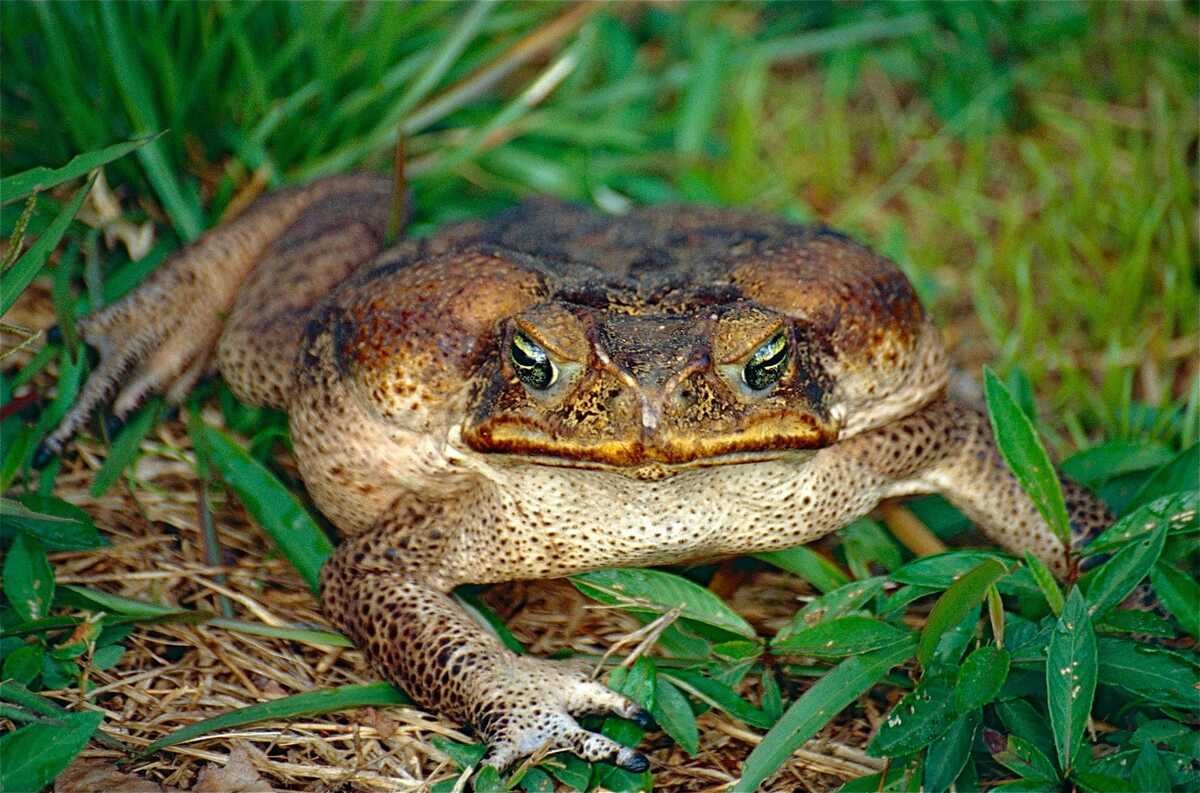(Crinia parinsignifera) This small ground dwelling frog is 2.3 cm long. It is very variable in colour and markings. It can have a smooth skin, or skin folds and warts on its dorsal side. The belly is dark grey with white markings. It can be found in swamps and ponds, often under debris at the edge. The male makes a series of low squelching sounds, repeated every few seconds from the edge of the pond.
Image by Donna Flynn
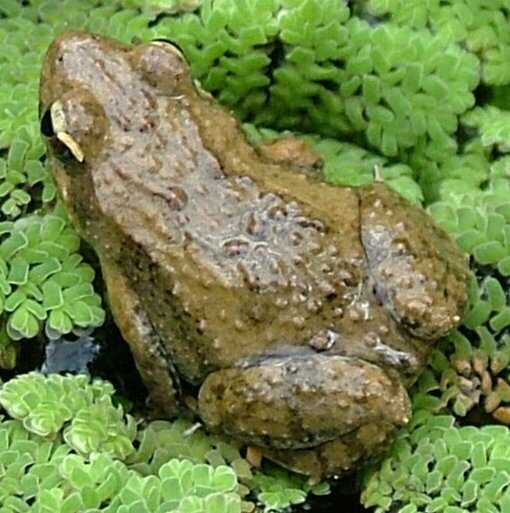
(Limnodynastes salmini) This large ground dwelling frog is native to southeastern QLD and northern NSW. It is 7.5 cm long with 3 pink, orange or red-brown stripes running down the back side, with two on each side and one along the back. Its back is brown with darker spots, the belly is white, and the thighs are mottled black and white. It has an orange raised bar running from under the eye to the shoulder and golden irises. It can be found dams, flooded areas and ditches in open areas or woodland while burrowing or under logs and rocks to avoid drought. After heavy rains the males make an "unk-unk-unk" call from vegetation in water.
Image by Donna Flynn
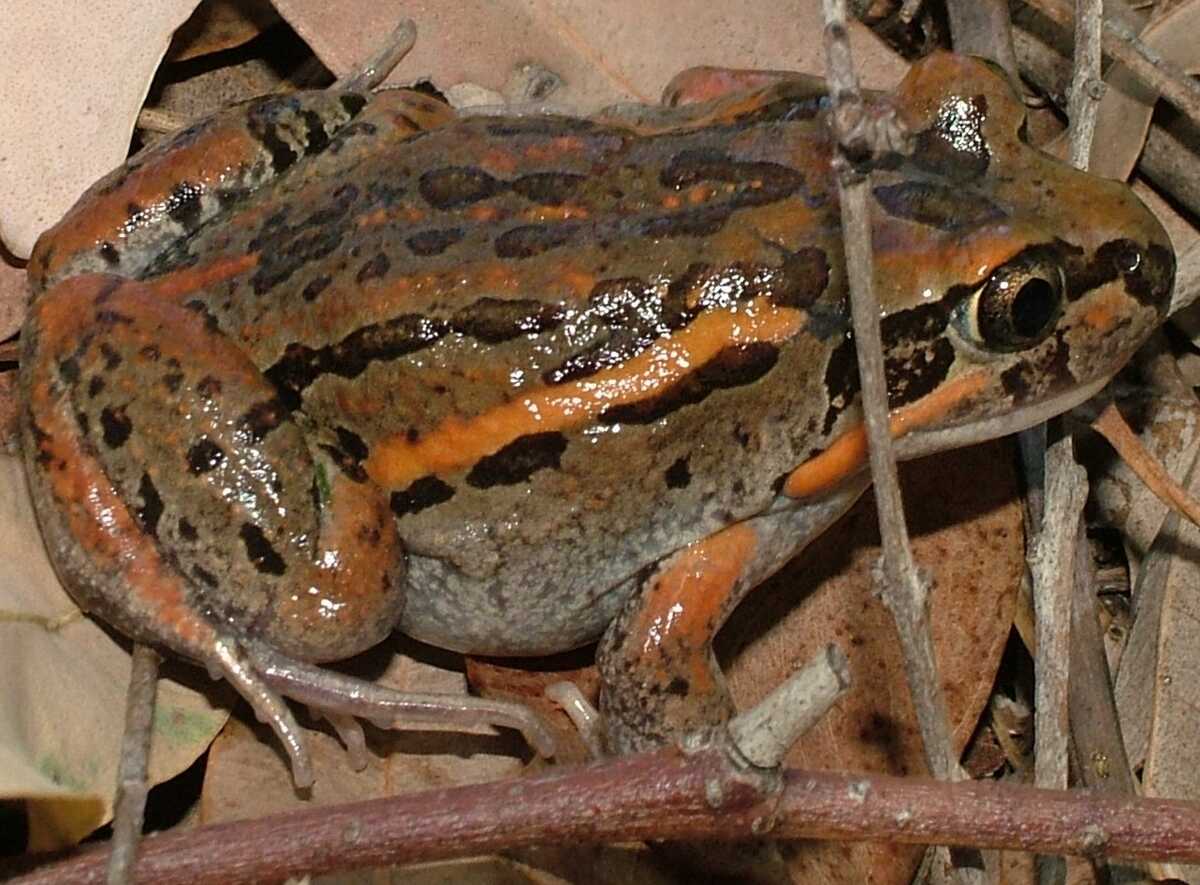
(Pseudophryne major) Also known as large toadlet, great toadlet or major toadlet, this ground-dwelling frog is native to eastern QLD to northern NSW. With about 4 cm length it is the largest Australian "toadlet". It usually has a red-brown back with darker marbling and scattered warts and ridges. It often has a red stripe along the middle of the back. It has golden yellow patches in the armpits, whileand the sides and arms are bluish grey. Its belly is dark brown or black and has yellowish white marbling. Its has a relatively sharp snout. It can be found in damp areas, creek lines or bogs in dry forest, woodland, sclerophyll forest and heathland in burrows or damp leaf litter. Throughout the year after rain the males make a grating "ark" call.
Image by Donna Flynn
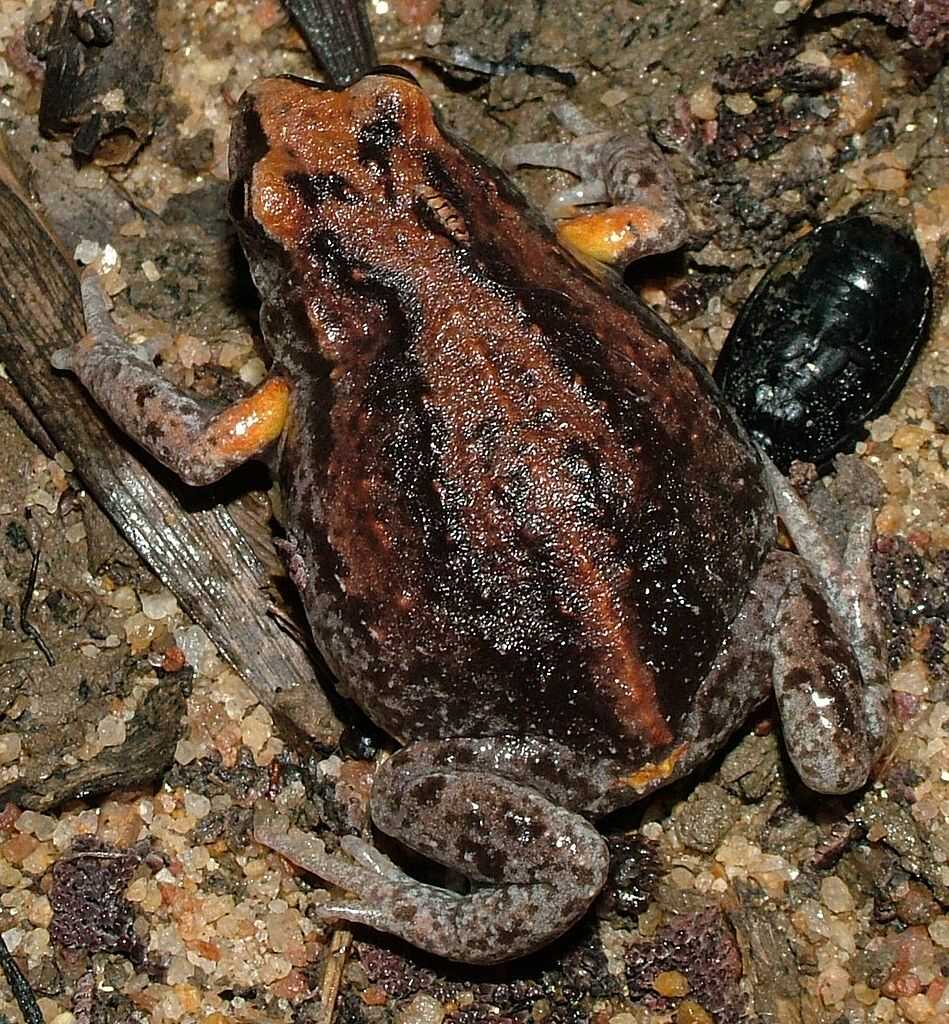
(Uperoleia laevigata) Also known as smooth toadlet, this ground-dwelling frog is native to the coast and west of the ranges of south-east QLD, all of eastern NSW and north-eastern VIC. It is 3.5 cm long and has grey-brown to olive-brown back, often covered in darker spots and blotches, a white belly and a red patch in the thighs. It usually has a pale triangular patch on the head in front of the eyes as well as a pale yellow patch in the armpit. It lives in dry forest, sclerophyll forest and cleared grassland/farmland along the coast, slopes and ranges. Males make a drawn out "arrrrk" call from from spring to autumn either the waters edge or up to 20 m away.
Image by Tnarg 12345
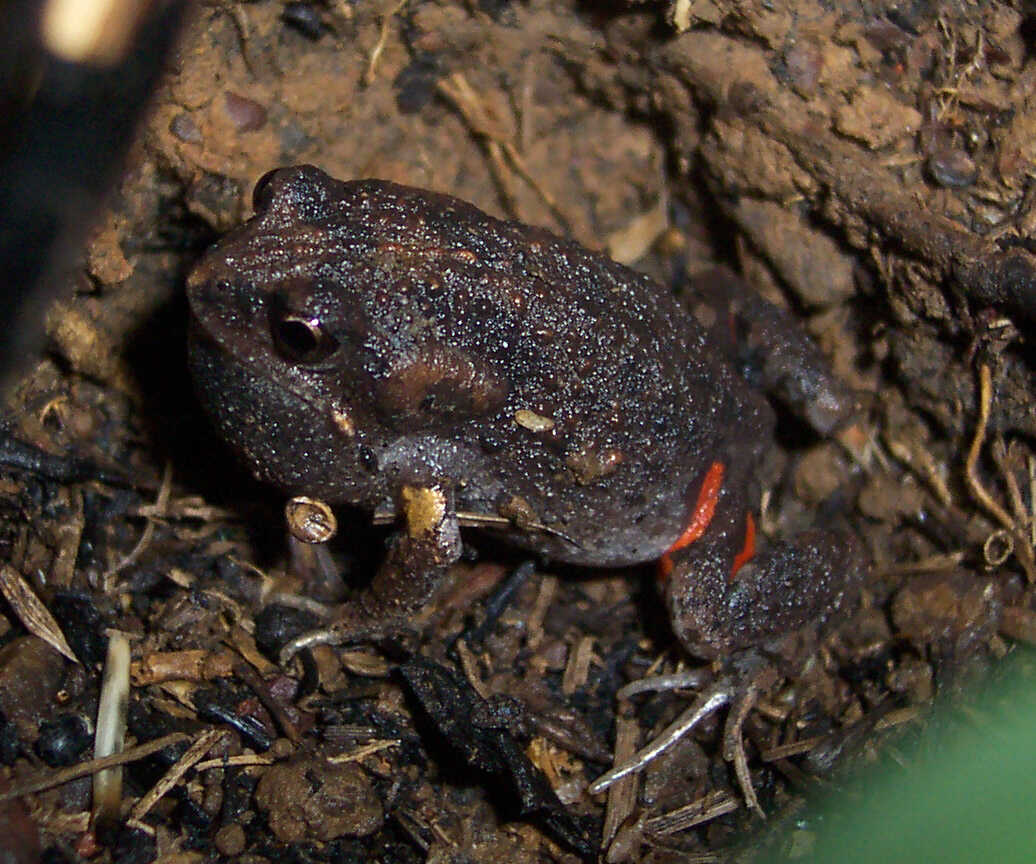
(Ranoidea alboguttata) Also known as striped burrowing frog, this large frog can be found from northern NSW, through eastern and northern QLD and into eastern NT. It is 7-8.5 cm long with brown, olive or green back that has darker blotches, warts and ridges, and usually a pale yellow or yellow-green stripe down the back. It has a dark streak (with a lateral skin fold) that runs from the snout, through the eye and the tympanum, to the flanks. It has dark highs and a visible eardrum. It has a granular skin on the belly and a smooth throat and chest are. It can be found in woodlands, grassy and cleared areas around temporary pools and water-filled claypans. During the day the males call from around the grassy edges of temporary pools with a rapid "quacking".
Image by Donna Flynn
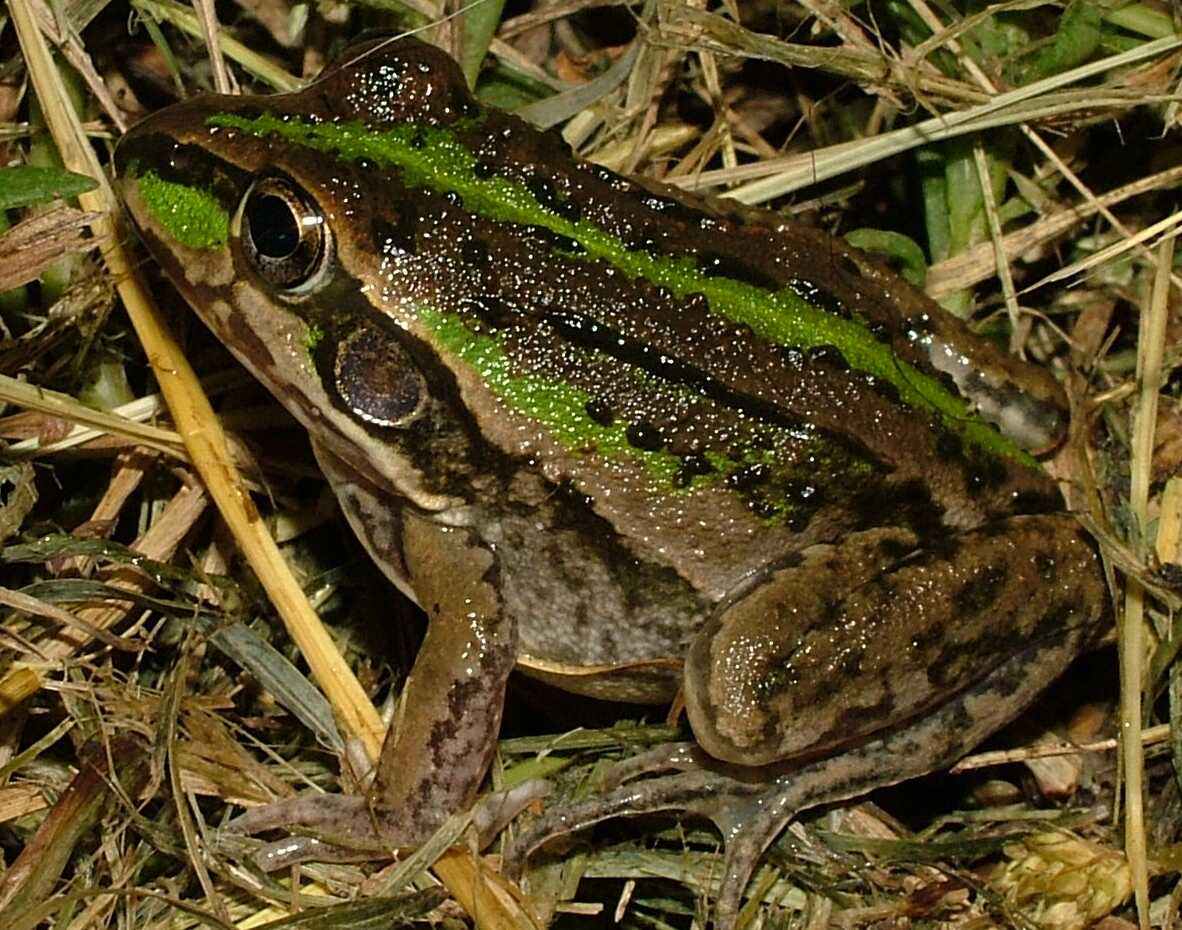
This frog (Ranoidea caerulea) is also called the White's tree frog or the dumpy tree frog. The former name comes from John White himself, as he first described this species in 1970. Native to Australia and New Guinea, this frog is bigger than the majority of the frogs in Australia (10cm+). Due to their antibacterial and antiviral skin discharge, they have managed to preserve their numbers as other amphibian species experienced declines in population. Over their eyes, they have a fatty area that can be used to identify them. Learn more at https://en.wikipedia.org/wiki/Australian_green_tree_frog
Photo by Robert Myers (CC BY 3.0)

(Litoria fallax) Also known as eastern sedge-frog, this small and very common tree frog is found on the eastern coast of Australia, from around Cairns, QLD, to around Ulladulla, NSW. It is about 2-3 cm long with males being smaller than females. The colour of its skin depends on the temperature and colour of surrounding environment. It varies from fawn to light green on top with some black flecks, and white below. It has a white line that goes from under the eye to the belly, and a brown one that goes from nostrils, across the eyes, and separates the green back and white belly.
Image by LiquidGhoul
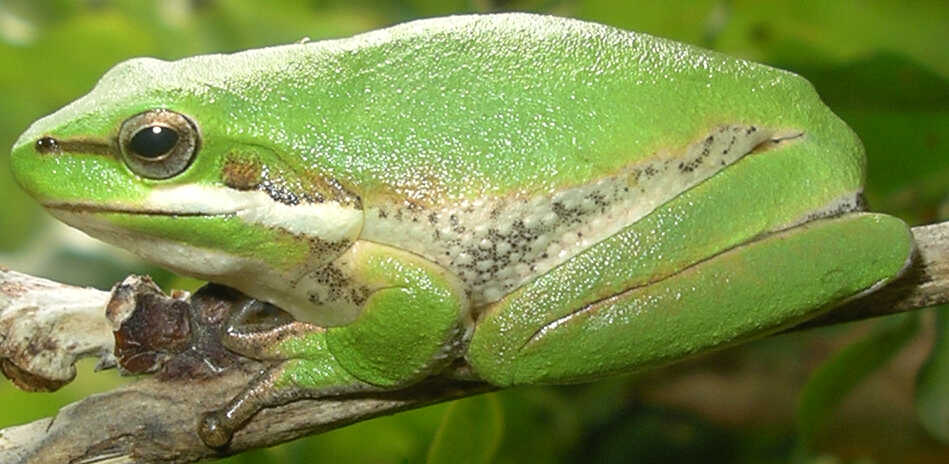
(Litoria peronii) Also known as emerald-spotted tree frog, emerald-speckled tree frog, laughing tree frog, or maniacal cackle frog, this tree frog is common in Australia. It is 4.4-6.5 cm long and is one of the most variably coloured frogs in Australia. It can change colour in less than one hour, ranging from shades of grey and brown to almost white. It has mottled yellow and black thighs, armpits, and groin, and sometimes emerald spots on the back. Its pupils appear cross-shaped. It doesn't like water and usually lives in places full of climbing material. It produces a high-pitched cackle, hence the names "laughing tree frog" and the "maniacal cackle frog".
Image by LiquidGhoul
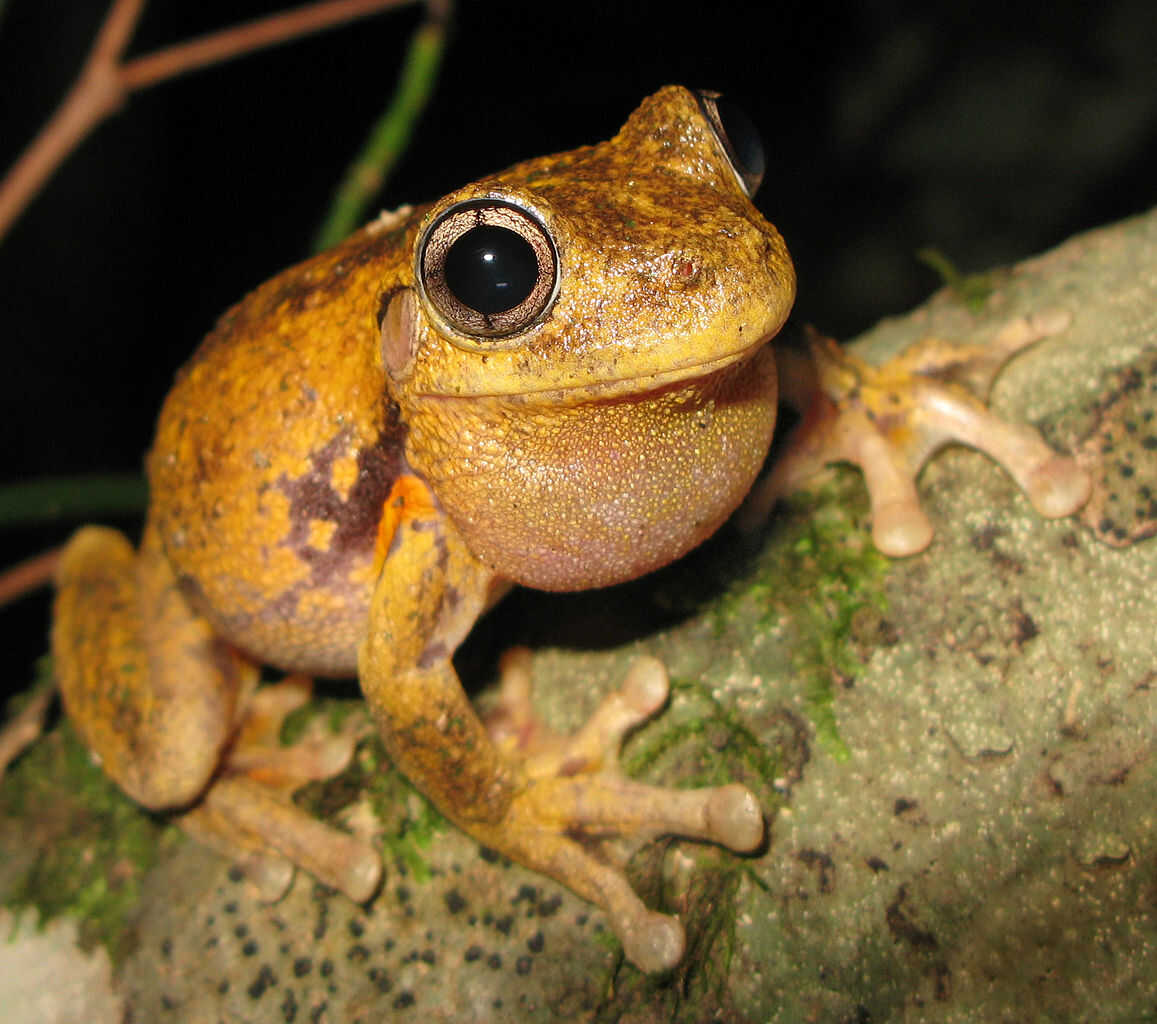
(Rhinella marina) Also known as the giant neotropical toad or marine toad, this is the world's largest true toad. It is native to South and mainland Central America. It is 10-15 cm long (with males much smaller than females) and produces poison in its glands, which can kill many animals. Its tadpoles are highly toxic as well. It has dry and warty skin with distinct ridges above the eyes that run down the snout. The colour of its skin varies from grey, yellowish, red-brown, to olive-brown, with varying patterns. It has a cream-coloured belly, horizontal pupils and golden irises. Learn more at https://en.wikipedia.org/wiki/Cane_toad
Image by Bernard Dupont (CC BY-SA 2.0)
